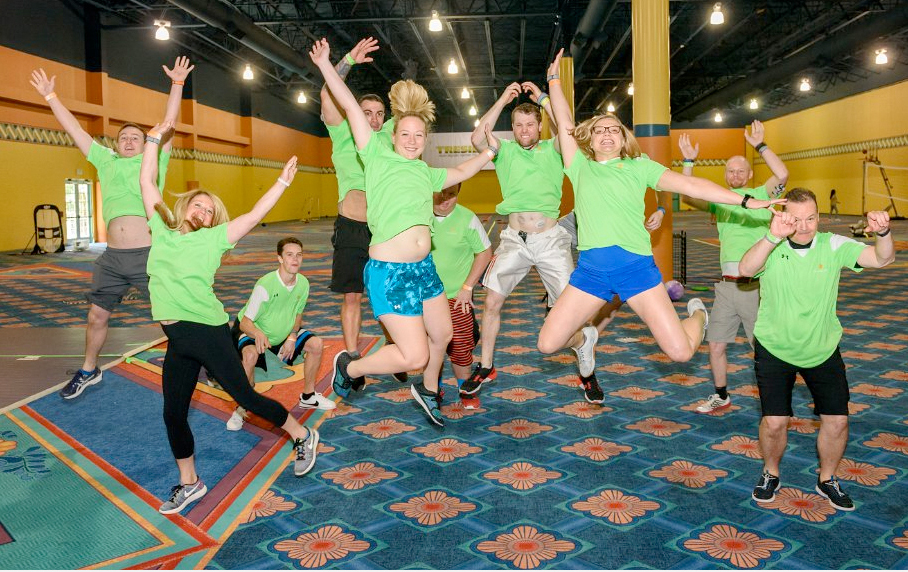Starting a New Sport
Looking to try something new? Let's create a plan!
Exercise should be a big part of everyone's diabetes management and children are no exception. However, making room for exercise in a busy child's schedule and taking into consideration insulin requirements can be a challenge. When should I check blood sugars, when do they eat, when to take insulin, when to cut back on insulin ... these are all valid concerns when considering activities.
But these concerns should not stop a child from participating in sports or any activity. The benefits of exercise far outweigh the challenge of juggling these aspects of diabetes management.
Many studies show that regular exercise helps prevent a number of the complications (i.e., heart disease) that many fear will develop later on in life. Most people who develop good habits as kids will continue to do so into adult life. The same goes for parents. If parents lead by example and are active the greater chance their child will do the same. For kids who participate in sports it is an opportunity to become part of a team which will also help build self-esteem that may be lacking especially during teenage years.
If a child decides to start a new sport, it is important to know what follow up steps to take.
The first thing to is make sure the healthcare team is aware of the child's desire to participate in a sport and to discuss what changes in insulin requirements need to be made. One of the fastest ways to derail an exercise program is to maintain the status quo with regard to insulin requirements. Failure to adjust insulin delivery may result in severe low blood sugars. Most schools require written consent to participate in a sport. In addition, parents should have a detailed discussion about diabetes and safety precaution with the coach prior to the first day of practice. Educating the coach on basic diabetes management is essential. Discussing the signs and treatment of hypoglycemia is a good place to start. Letting the coach know that a snack or perhaps Gatorade may be needed before, during, or after practice and a game is important. Showing the coach what a meter; syringe, pen, or pump; and insulin are and how they help in the child's management around exercise is also wise. Depending on the age of the child, letting teammates know can also help cut down on problems that may occur. Hypoglycemia can often go undetected if coaches or teammates do not know what the symptoms are. Some kids may not want their friends to know they have diabetes but informing the coach and at least a couple of close teammates is very important.
Carrying fast acting carbohydrates (i.e., glucose tablets) is also a good idea. These may be concealed in a pocket or perhaps in a sock. Be prepared to have extra snacks on the sidelines (i.e., peanut butter crackers) to use following the use of fast acting carbs for a low blood sugar. Snacking after exercise is highly recommended to help prevent a low blood sugar and also to replace glycogen stores lost during exercise. It is common for low blood sugars to occur after exercise. This may be several hours up to 24-36 hours after activity. Everyone is different but it is prudent to plan for this situation.
Checking blood sugar is one of the best ways to keep on top of any low or high blood sugars. If there is a problem during exercise with high or low blood sugars, check about an hour before and a half hour before the start. This will allow you to compare two numbers to see if blood sugars are trending up or down. You will have thirty minutes to make any adjustments if needed with food or insulin. Checking frequently during activity can assure the athlete that he or she can go all out without fear of a low blood sugar. Checking afterwards is also important so a plan is in place to eat carbs. If the blood sugar is too high (i.e., 300+ mg/dl [16.6 mmol/L]) it may not be a good idea to eat carbs for fear of going even higher and spilling ketones. The presence of ketones in the urine is an indication the body is deficient of insulin and is breaking down fats for energy. A byproduct of this type of fat burning becomes toxic to the system. Continuing to exercise may cause the blood sugar to go even higher and spilling more ketones may eventually lead to diabetic ketoacidosis (DKA). Drinking a lot of water will help along with insulin to bring blood sugars down to the normal range. How much insulin depends on the individual's correction factor and doctor's advice.
Consider a medical ID. Wearing medical ID may be barred from practice or games if it can be harmful to the athlete or anyone who may come in contact with them causing injury. There are nylon wrist bands available to serve as medical IDs, which may be a safer and potentially more comfortable alternative.
Planning will go a long way when exercising or playing a sport. Sitting down with the practice and game schedule prior to the season with your healthcare team and then eventually with the coach will help tremendously. Discussing whether practices or games are at night or weekend mornings will require changes in the usually timing of food, insulin, and checking blood sugars. Away games may be different than home games because there is often a bus ride. How long the bus ride is may determine when food and insulin are used prior to and after games.
The bottom line with exercise and diabetes is that it can be done safely as long as you are prepared. If occasionally a low or high blood sugar happens don't beat yourself up. Sometimes no matter how prepared you are wide fluctuations can happen. Keeping blood sugars in a good range before, during, and after exercise will go a long way towards top performance.





